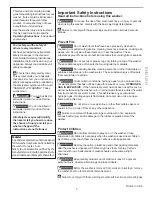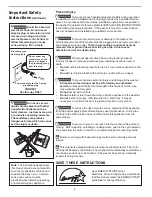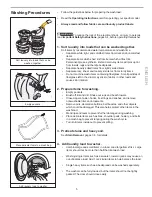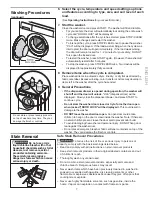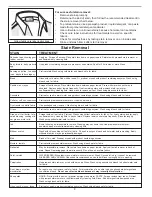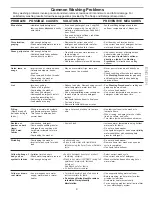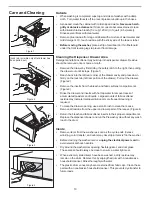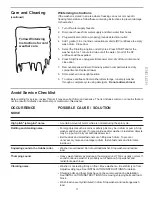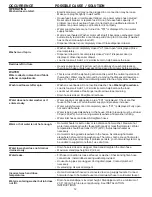
5
ENGLISH
Washing Procedures
•
Follow the guidelines below for preparing the wash load.
•
Read the Operating Instructions card for operating your specific model.
•
Always read and follow fabric care and laundry product labels.
To reduce the risk of fire, electrical shock, or injury to persons,
read Important Safety Instructions, pages 3-4, before operating this washer.
1. Sort laundry into loads that can be washed together.
Sort items by recommended water temperatures and wash time.
•
Separate white, light, and colorfast items from dark and noncolorfast
items.
•
Separate items which shed lint from items which attract lint.
Permanent press, synthetic, knit and corduroy items will pick up lint
from towels, rugs and chenille bedspreads.
•
Separate heavily soiled items from lightly soiled items.
•
Separate lacy, sheer and loosely knit items from sturdy items.
•
Do not machine wash items containing fiberglass. Small particles of
fiberglass left in the drum may stick to fabrics in other loads and
cause skin irritation.
2. Prepare items for washing.
•
Empty pockets.
•
Brush off lint and dirt. Shake out rugs and beach towels.
•
Close zippers, fasten hooks, tie strings and sashes, and remove
nonwashable trims and ornaments.
•
Remove pins, decorative buttons, belt buckles, and other objects
which could be damaged. This also helps protect other items in the
wash load.
•
Mend rips and tears to prevent further damage during washing.
•
Place delicate items such as bras, shoulder pads, hosiery, and belts
in a mesh bag to prevent tangling during the wash cycle.
•
Turn knit items inside out to prevent pilling.
3. Pretreat stains and heavy soil.
See Stain Removal, pages 7-8, for details.
4. Add laundry load to washer.
•
Combine large and small items in a load. Load large items first. Large
items should not be more than half the total wash load.
•
Washing single items such as a sweater, towel or jeans may cause an
out-of-balance load. Add 1 or 2 similar items to help balance the load.
•
Single heavy items such as a bedspread can be washed separately.
•
The washer can be fully loaded, but the items should not be tightly
packed. The door should close easily.
Sort laundry into loads that can be
washed together.
Empty pockets.
Place delicate items in a mesh bag.
Add laundry load to washer.


